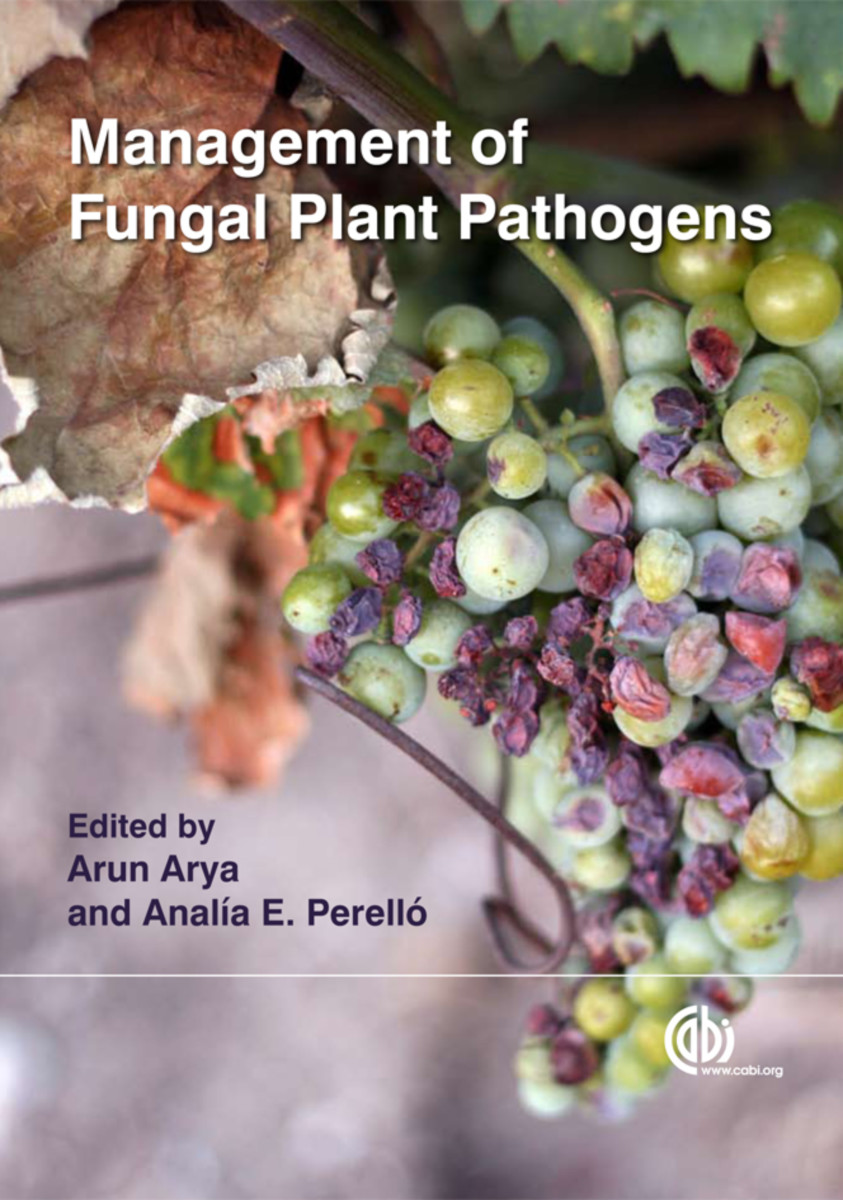Management of Fungal Plant Pathogens
- Publisher
CABI - Published
6th April 2010 - ISBN 9781845936037
- Language English
- Pages 388 pp.
- Size 7" x 9"
- Images illus
Microbes, including fungi, are always adapting to different environmental conditions and phytopathologists are continually faced with the management of new diseases and the resurgence of old ones. Amidst growing concerns about the environment and food security, the development of management strategies that minimize crop losses and promote sustainable agriculture is increasingly important.
Management of Fungal Plant Pathogens presents a review of research into pathogenic fungi in a diverse selection of economically important crops, including fruits and cereals. The establishment and management of fungal plant disease using conventional and ecofriendly methods is discussed with an emphasis on the use of microorganisms and biotechnology. Chapters also examine the role of microbes in growth promotion, bioprotectors and bioremediators and presents practical strategies for using microbes as well as botanicals in sustainable agriculture.
Part One: Botanicals in Fungal Pest Management
1) Recent advances in management of fungal pathogens of fruit crops
2) Botanicals in agricultural pest management
3) Deleterious effects of fungi on post-harvest crops and their management strategies
4) Exploitation of botanicals in the management of phytopathogenic and storage fungi
5) Use of plant extracts as natural fungicides in the management of seed borne diseases
Part Two: Disease Control through Resistance
6) Resistance to Septoria leaf blotch in wheat
7) Barley and wheat resistance genes for Fusarium head blight
8) Sustainable management of rice blast [Magnaporthe grisea (Hebert) Barr]: 50 years of research progress in molecular biology
Part Three: Biological Control Mechanisms
9) Post-harvest technology- yeast as bio-control agents: Progress, problems and prospects
10) Biological control of plant diseases: An overview and the Trichoderma system as bio-control agent
11) Physiological specialization of Ustilaginales (smut) of Geheros Bromus, Zea and Triticum in Argentina
Part Four: Endophytes in Plant Disease Control
12) Status and progress of research in endophytes from agricultural crops in Argentina
13) Effect of tillage systems on the arbuscular mycorrhizal fungi (AMF) propagule bank in soils
14) Mechanism of action in arbuscular mycorrhizal symbionts to control diseases caused by various fungal pathogens
15) Role of fungal endophytes in plant protection
Part Five: Managing Fungal Pathogens Causing Leaf damage
16) The rust fungi: Systematics, diseases and their management
17) Etiology, epidemiology and management of fungal diseases of sugarcane
18) New and emerging fungal pathogens associated with leaf blight symptoms on wheat (Triticum aestivum) in Argentina)
19) A review of the fungal diseases of the annual legume crop of fenugreek (Trigonella foenum-graecum L.)
20) Fungal diseases of oilseed crops and their management
21) Occurrence of Pyrenophora tritici- repentis causing tan spot in Argentina
22) Epidemiological studies on Septoria leaf blotch of wheat in Argentina
Part Six: Alternative Control Strategies
23) Review of Thecaphora amaranthicola M. Piepenbr causal agent of Smut on Amaranthus mantegazzianus Pass
24) Population biology and management Strategies of Phytophthora sojae causing Phytophthora root and stem rots of Soybean
25) Management of fungal pathogens - a pre requisite for maintenance of seed quality during storage
26) Controlling root and butt rot diseases in alpine European forests
27) Some important fungal diseases and their impact on wheat production


